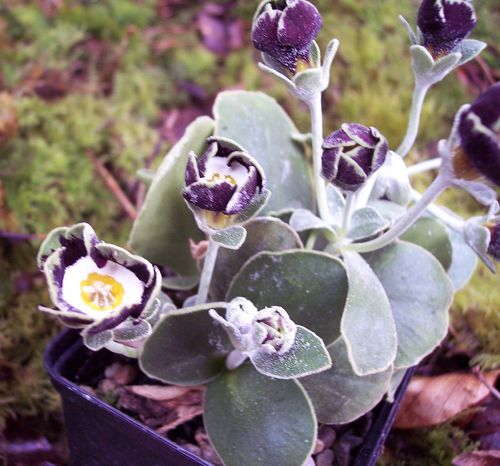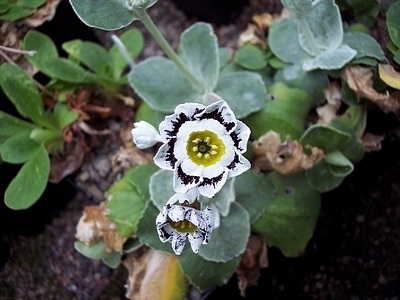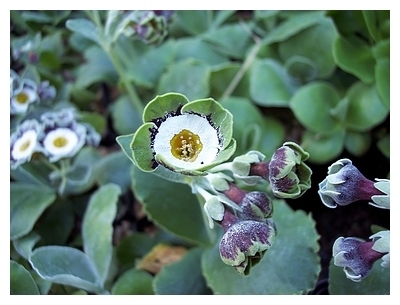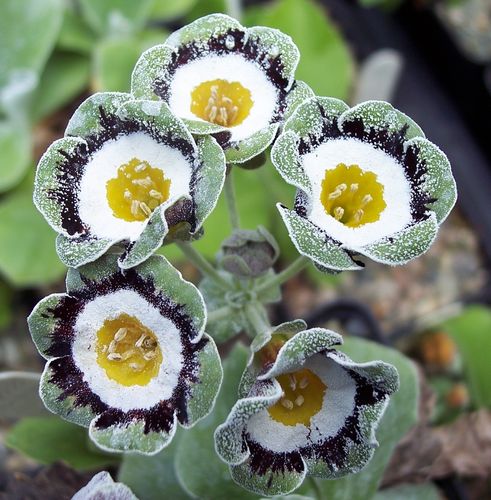




Auriculas - Primulas Show - edged
Show - edged
Edged auriculas started to occur as spontaneous mutations in the middle of the eighteenth century when a sport produced a curious leaf-like flower petal. This is called a green edge. The body colour is blank, smooth on the inside but irregular towards the petal edge. The green edges do not have meal on their petals; contrast this with the grey and whites:
Grey edged show varieties have less meal on the petal edges which is why their colouring is less intense than the white edged types. They are nevertheless wonderful plants. Cold greenhouse culture is required to preserve the flower pattern. Perfectly hardy.
White-edged auriculas are amazing. They have a contrasting appearance because on the inside of the white edge is a black body colour and then a ring of white paste towards the centre. The foliage develops a white covering - meal or farina. They must be grown under cold glasshouse conditions during flowering time to protect the floral pattern They are very hardy.






















